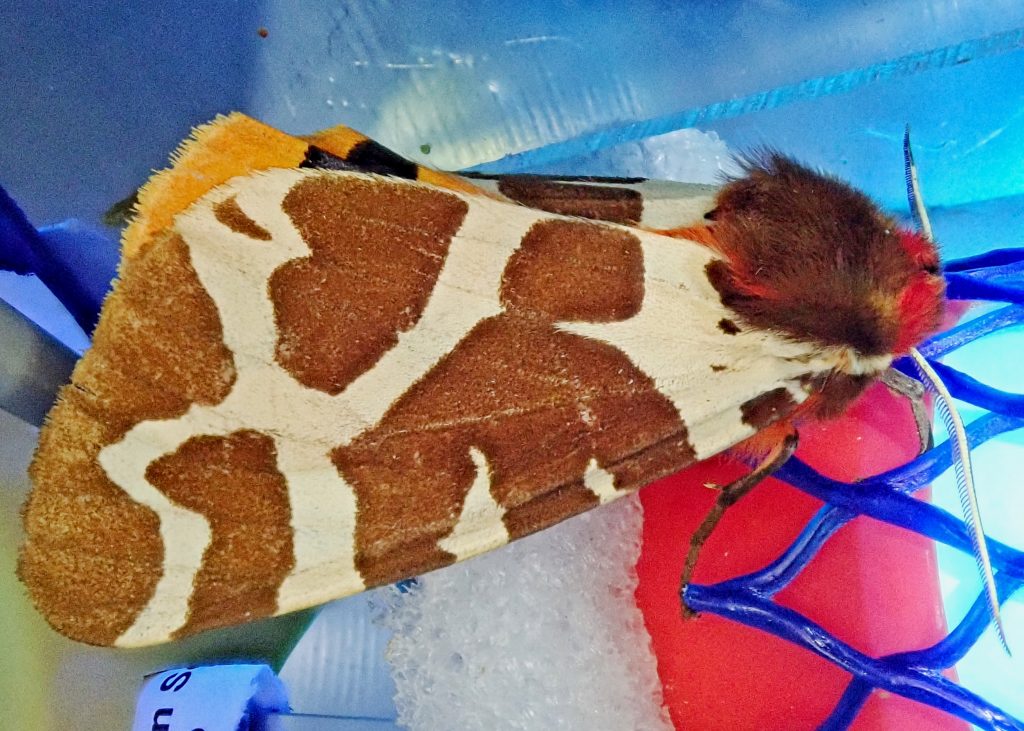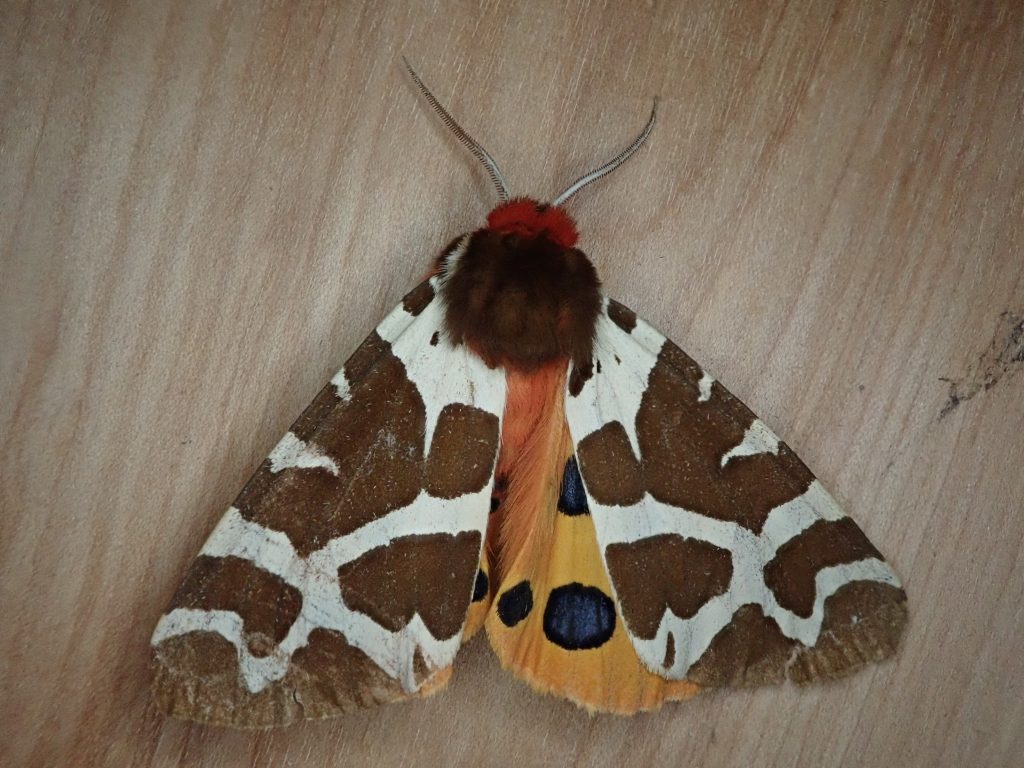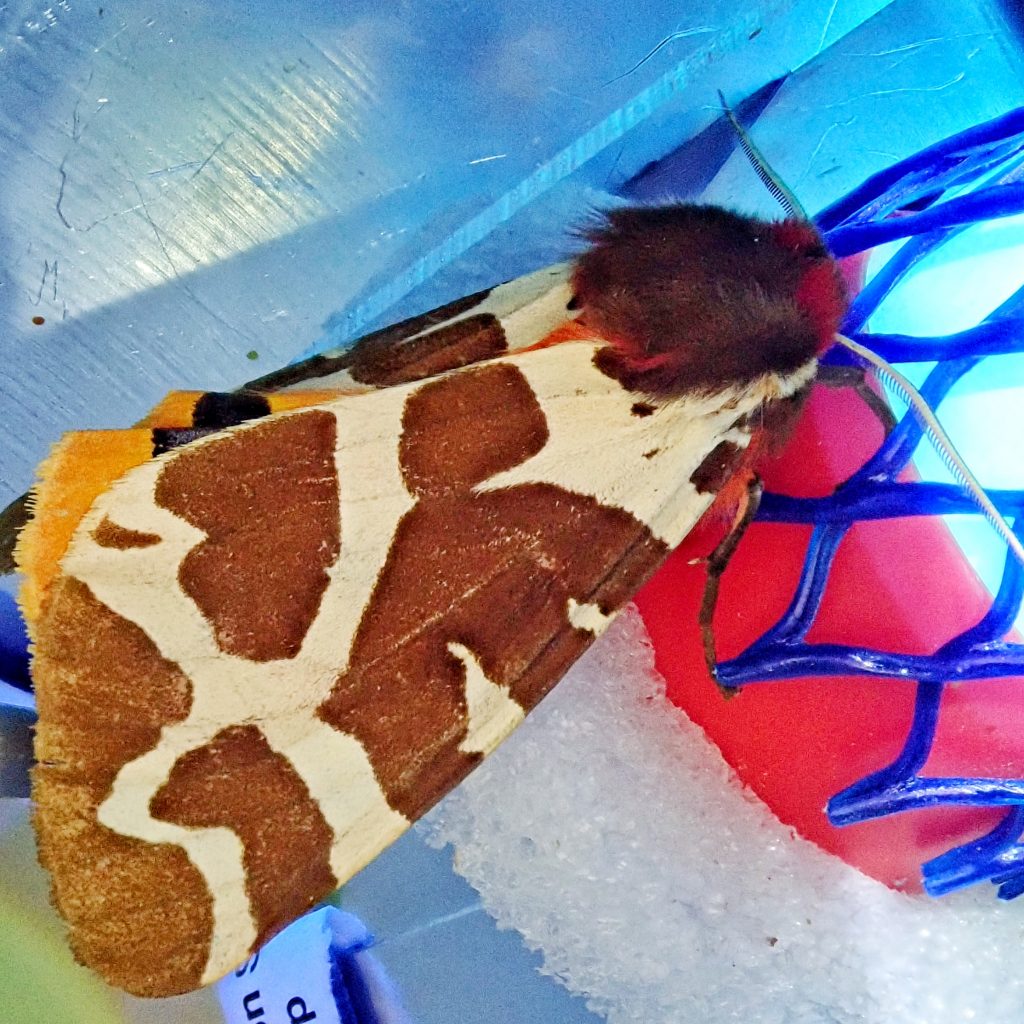
Arctia caja (Great Tiger Moth)
This is a large (FW length 27-32mm), colorful, and strikingly patterned moth in the family Erebidae. The bold markings on the forewing probably warn predators that this moth is toxic, having ingested pyrrolizidine alkaloids as a caterpillar from its host plants, which include Plantago lanceolata (English Plantain), Senecio jacobaea (Tansy Ragwort), Digitalis purpurea (Common Foxglove), and other pyrrolizine containing plants in the plant families Boraginae, Fabaceae, Asteraceae, and many others. And the bright orange and black spotted hindwings are undoubtedly startling when suddenly flashed in the face of a predator.
This species is widespread west of the Cascades, but on the eastside it is only found in forested areas as far south as the Blue Mountains in Oregon. Adults fly from late June to early September.

http://pnwmoths.biol.wwu.edu/browse/family-erebidae/subfamily-arctiinae/tribe-arctiini/arctia/arctia-caja/
http://www.wildlifeinsight.com/british-moths/garden-tiger-moth-and-wooly-bear-caterpillar-arctia-caja/
https://en.m.wikipedia.org/wiki/Garden_tiger_moth
Size– FW length 27-32mm
Habitat– Cool areas with seasonal fluctuations in moisture, light, and temperature, and the presence of some of the many possible larval hosts.
Range– Widespread west of the Cascades; absent from the hotter, drier, open areas east of the Cascades
Eats– Larval hosts almost universally contain pyrrolizidine alkaloids
Flight Season– Late June to early September

1 thought on “Arctia caja (Great Tiger Moth)”